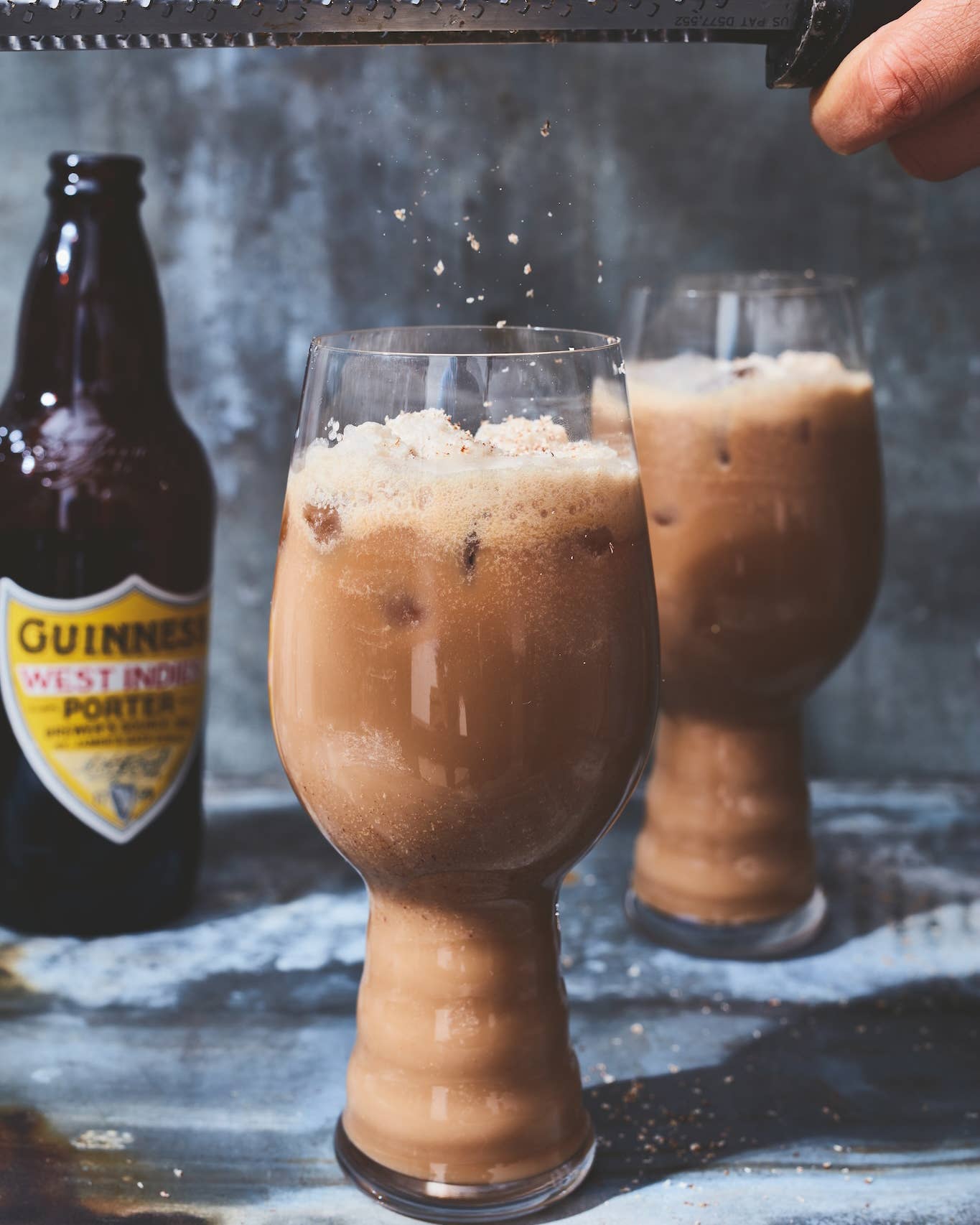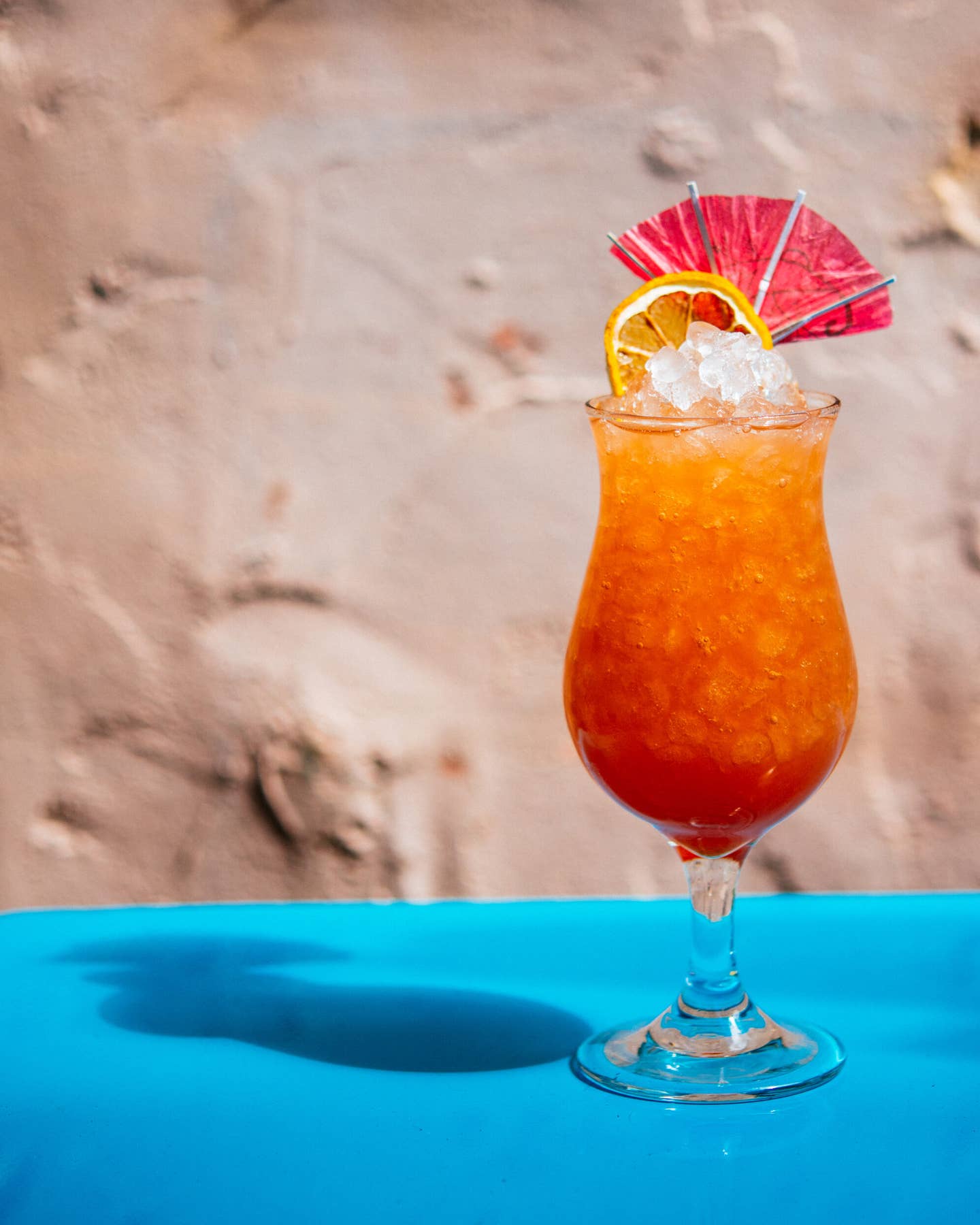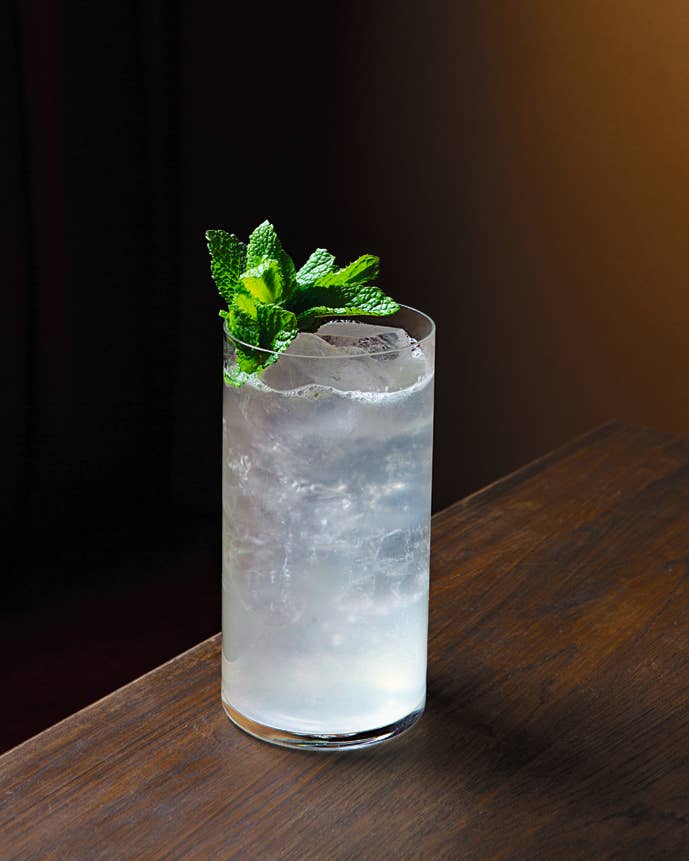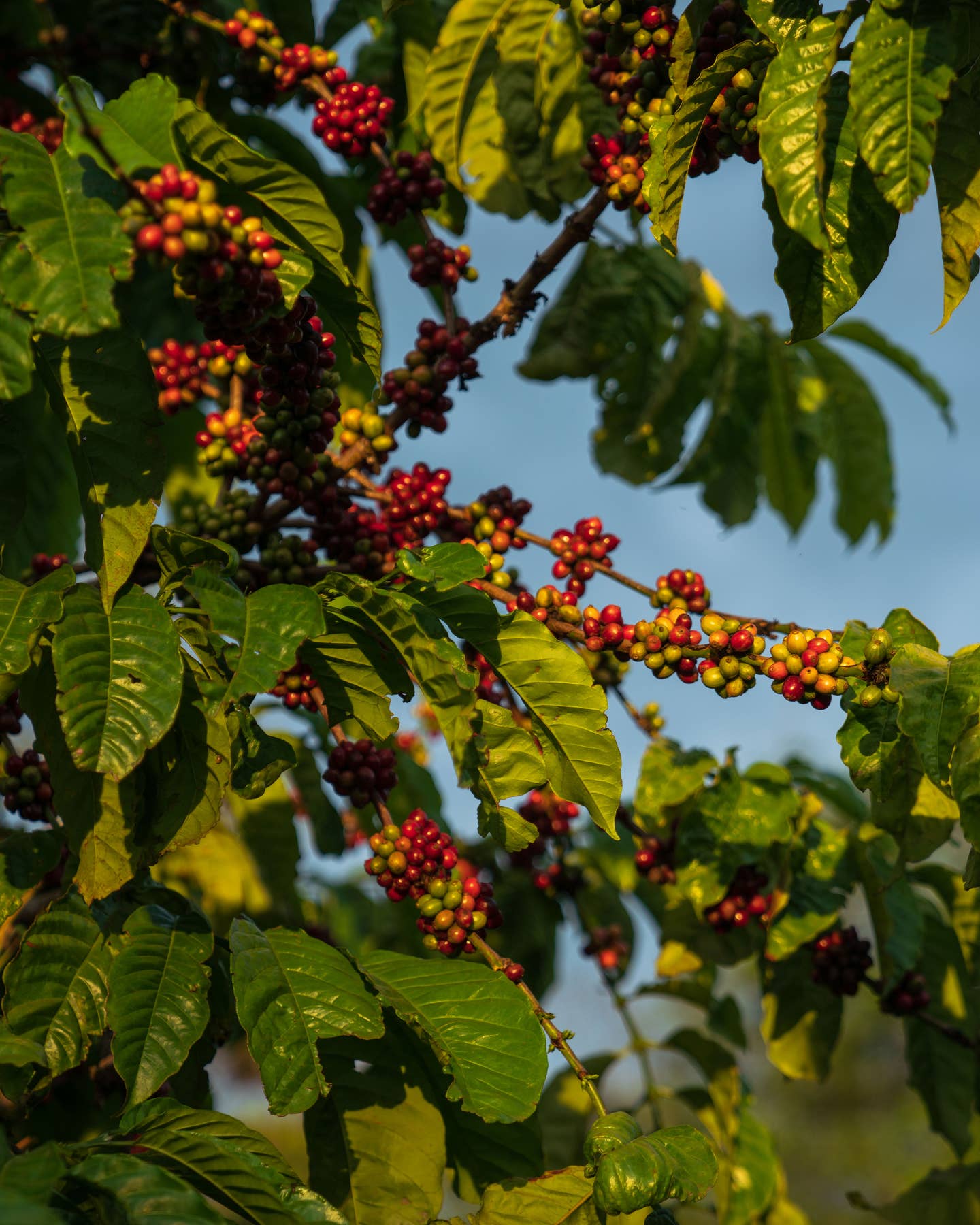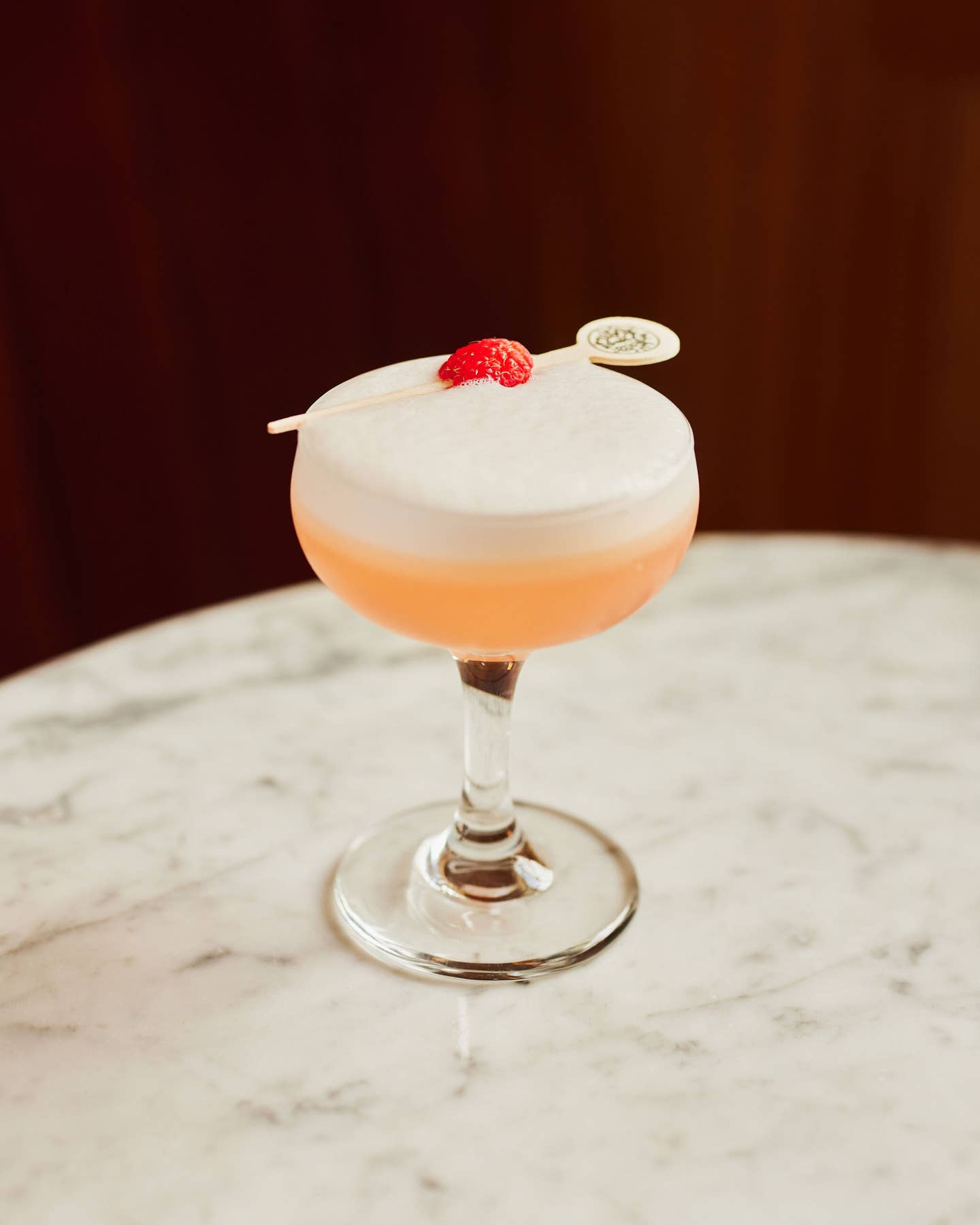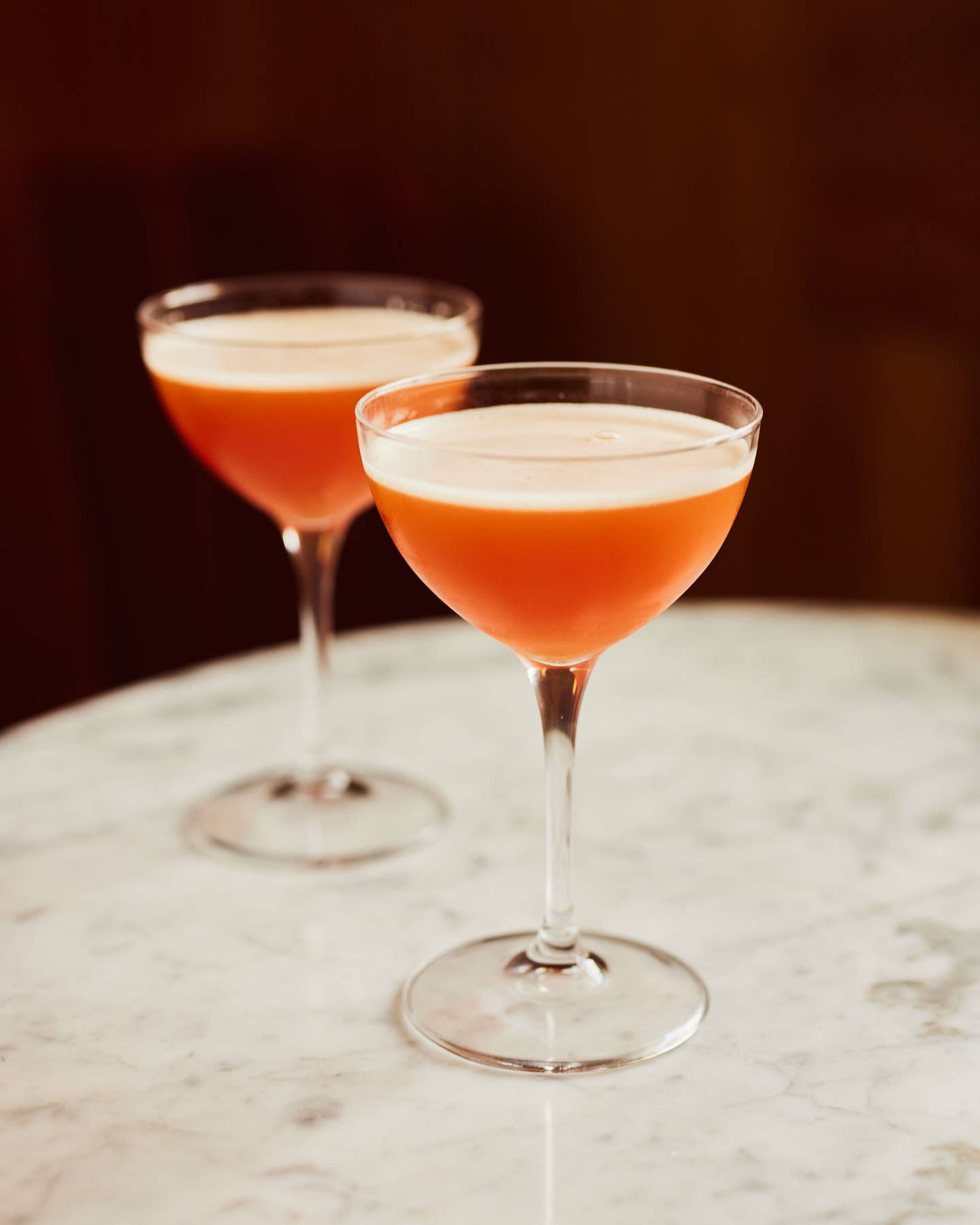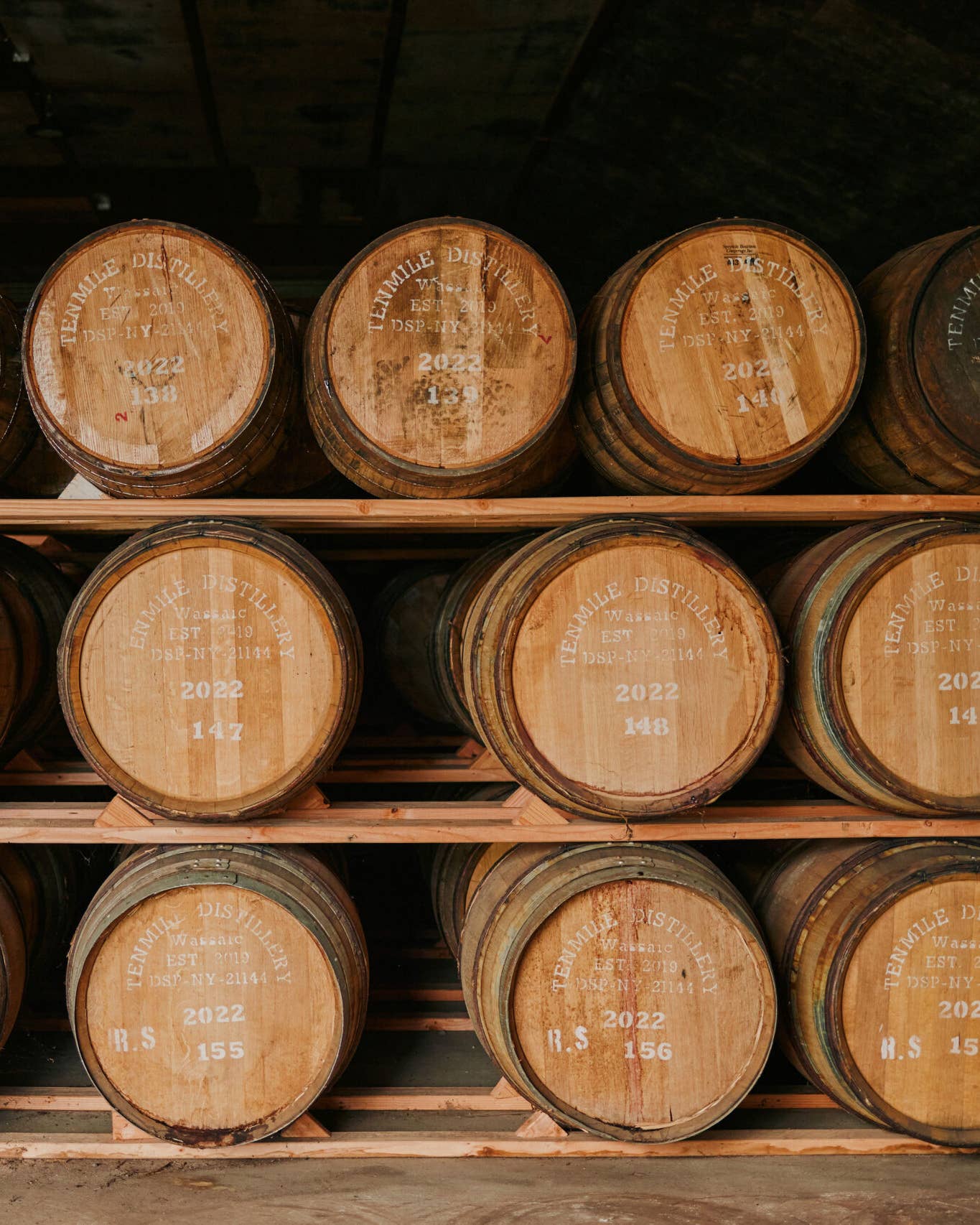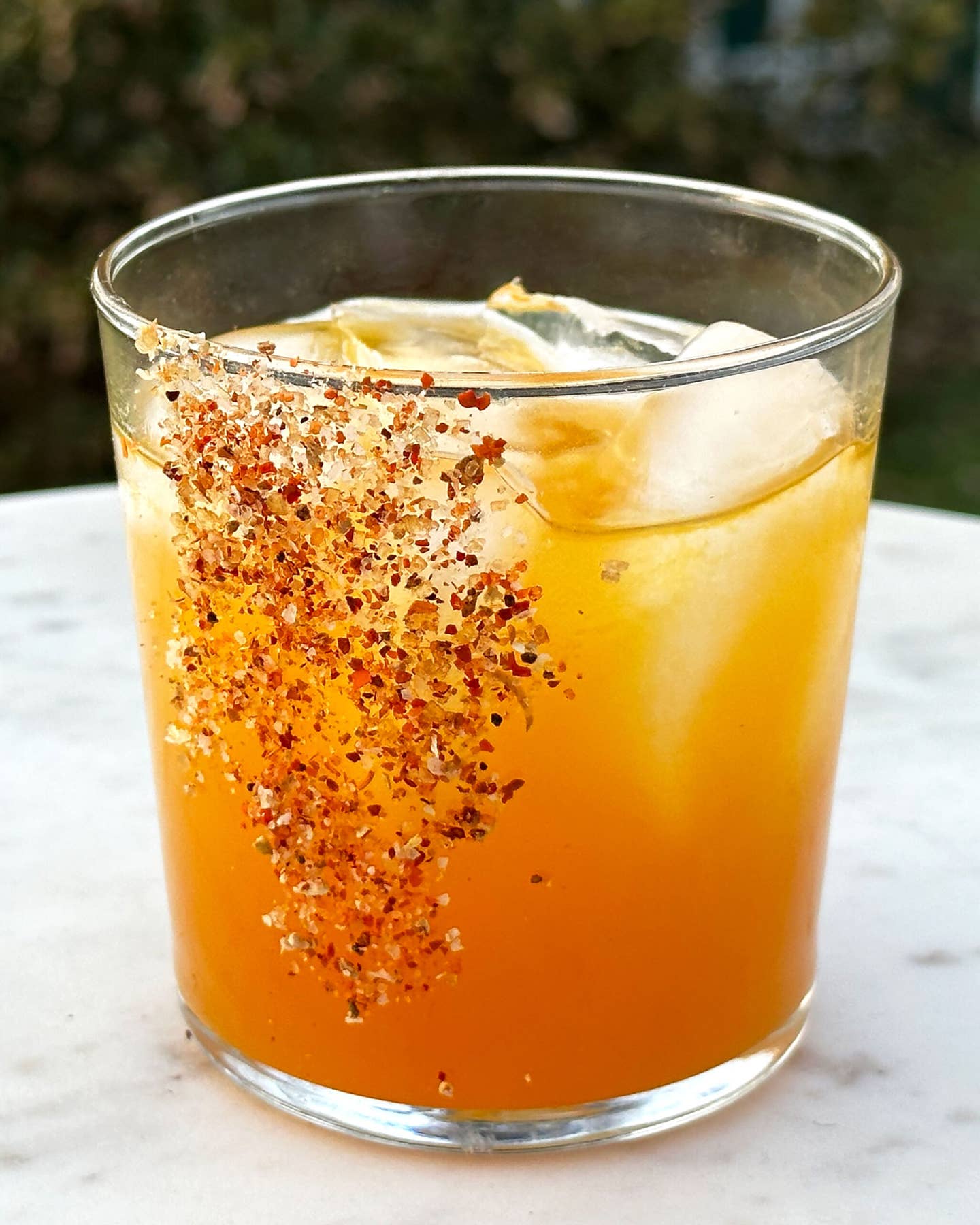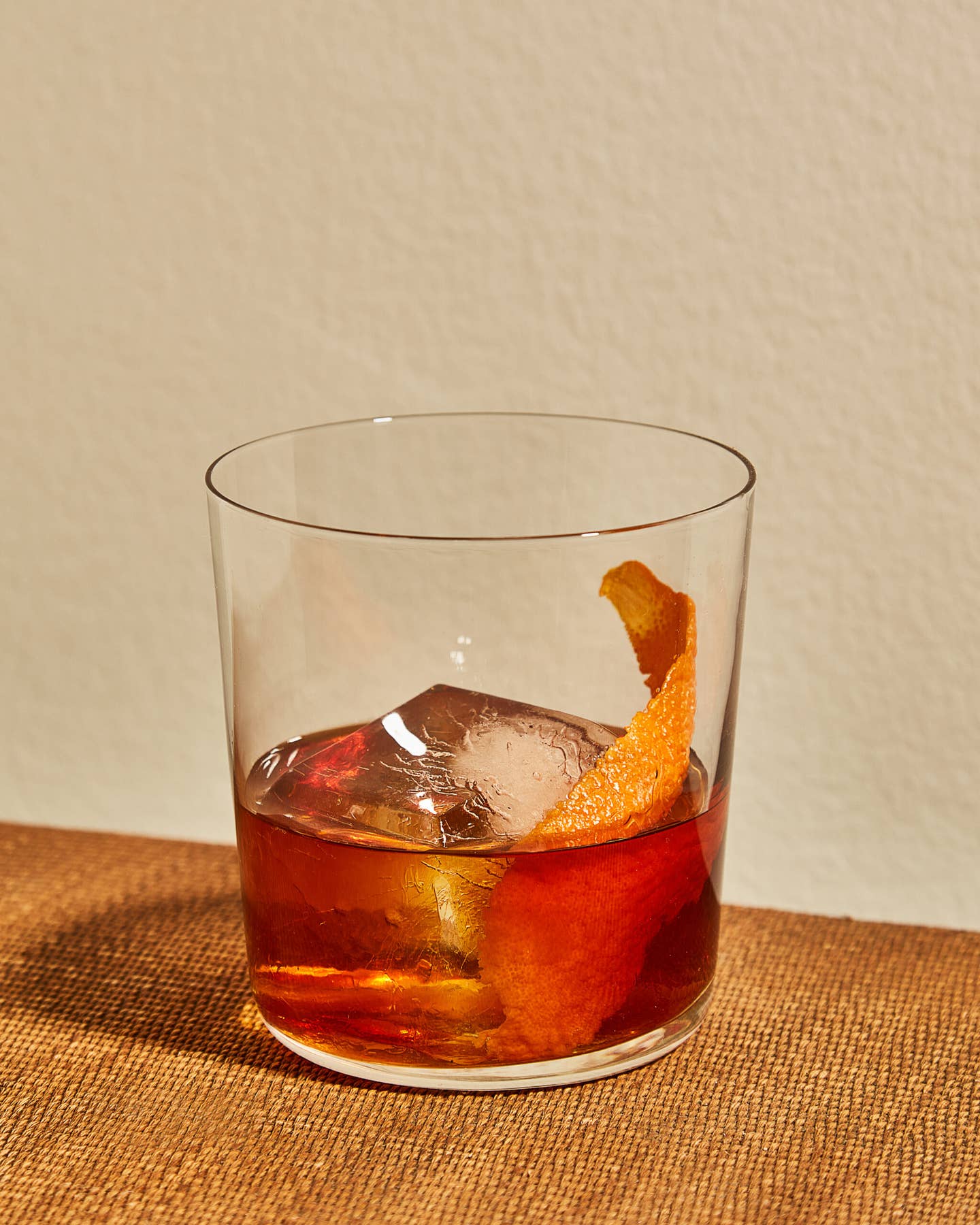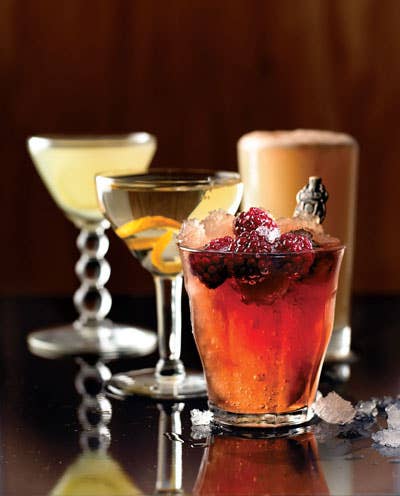
The revival in the craft of cocktail mixing has been kind to spirits with long histories and bold flavors. Fifteen years ago, American straight rye whiskey was almost extinct; now there are at least 25 different kinds on the market. Absinthe is back for the first time since before Prohibition, and, if you know where to look, you can even buy an obscurity like Batavia arrack, a funky Indonesian rum variant last popular here around 1850. Among those spirits, gin is enjoying a particularly flamboyant renaissance: it's hip, it's sexy; there are dozens of new brands on the market; distillers are experimenting with unorthodox and exotic flavorings; and long-extinct varieties are being brought back from the grave, some of them likely to come as a surprise to anyone whose notion of gin begins and ends with the words London and dry.
A century ago, London dry gin—the clear, bracing, juniper-forward stuff we've come to expect in our martinis—was a recent invention, just one among various English styles of gin, including Old Tom and Plymouth, each with its own characteristics. There was also genever, the earliest incarnation of the liquor, popularized by the Dutch in the 1500s; it's the one that inspired the English to make gin in the first place. (Indeed, gin is a slang abbreviation of genever, the Dutch word for juniper.) In addition to revivals of these antique styles, gin has also, in recent years, been subject to the same impulse that's brought us such novelties as Buddha's hand citron-flavored vodka and chocolate-mole cocktail bitters. Suddenly, between the traditionalists and experimenters, you need many more words to talk about gin. Here, then, is a Baedeker's tour of the new/old world of gin as it stands at the beginning of the 21st century.
First, the basics. To make any sort of gin, you take a base spirit and flavor it with juniper berries, the piney-tasting seed-cones that are gin's defining feature, along with an assortment of other "botanicals"—aromatic berries, barks, peels, seeds, roots, leaves, and flowers. Thus enhanced, the spirit is typically redistilled to integrate and refine the flavors. Since the 1600s, when the English first began making gin, the goal for London distillers has been to make the base spirit as clean tasting as possible and let the botanicals provide the flavor. By the middle of the 1800s, most of those distillers had replaced the old moonshiner-style pot still, which made an impure but rich-tasting spirit, with the newer column still, which could produce something pretty close to pure alcohol. This meant that they could base their gin on a spirit that was utterly neutral—essentially, vodka.
At the same time, custom in England and elsewhere had settled on a more-or-less standard list of gin botanicals, heavy on the juniper, with coriander and citrus peel for brightness and earthy orrisroot and celery-like angelica for depth. Because column distilling created a base spirit that was so clean, the sugar that distillers had once used to help smooth out the drink's rough edges was discarded (hence the dry). The resulting gin was spicy and bold enough to stand up in a mixed drink, while still being light in body, clean tasting, and refreshing. With the help of the dry martini, a Gilded Age invention whose popularity increased exponentially over the course of the 20th century (see ** The Martini Variations**), by 1940 London dry gin had driven every other style out of most markets.
Among the kinds of gin that faded from view around this time was Old Tom, a style, popular at the beginning of the 19th century, that was the direct predecessor to London dry. (There are various explanations for the name, none of them wholly convincing.) While everybody can agree on the definition of London dry gin—indeed, its characteristics are so well known that it's now made all over the world, not just in London—Old Tom is a different story. I speak from experience here: two years ago Tad Seestedt—a distiller based in Sheridan, Oregon, and an old friend of mine—asked me to help him come up with an Old Tom gin. It wasn't easy: Old Tom's heyday was a period of great technological and cultural change, and what began the 19th century as a thick-textured pot-still spirit that was highly flavored, sweetened to cover impurities, and often barrel-aged, ended it as something not far from London dry gin, only with a touch of sugar and a slightly different balance of botanicals.
That breadth of definition does provide a good deal of wiggle room for the distiller. In the end, after much research and tasting, Seestedt decided to base his gin, which he called Ransom, on an early version of Old Tom. He used a malty, lightly whiskeylike distillate that blended the product of an old-fashioned pot still with vodkalike neutral spirits infused with a good, strong dose of juniper and other botanicals. Then he lightly aged that mixture in old wine barrels, which gave it a rather startling orange color. Now, in addition to Ransom, there's another new Tom on the market, and it actually comes from England. Hayman's is lightly sweet and floral, with a fuller body than that of a London dry but none of the maltiness that one finds in the Ransom. Either of these gins will make for a fabulously rich and aromatic martinez (see ** Martinez**), the 1880s-era Old Tom-based cocktail made with maraschino liqueur and sweet vermouth that is the antecedent of the martini.
While Old Tom has been rescued from oblivion, Plymouth gin never completely died out, although it almost gave up the ghost in the 1980s. Plymouth gin has been made in the English port of the same name since 1793 and by law can be made only there. Nowadays, the one made by Plymouth's sole remaining distillery is a very appealing, bright, and clean-tasting gin that is virtually indistinguishable from a London dry. It didn't used to be so. What changed is not the botanicals, which have remained the same since 1793, but rather the base spirit, which has been lightened up quite a bit, judging by accounts such as the one in an industrial encyclopedia published in London in 1867, which describes Plymouth gin as "flavour[ed] with the wash of whisky distilleries." You can also glean clues about Plymouth gin's original character from an 1869 recipe collection titled Cooling Cups and Dainty Drinks, by William Terrington, who points out that Plymouth gin "closely resembles Hollands."
Hollands, you see, is the old English name for Dutch genever, and where the English have, over the last couple of centuries, moved steadily toward keeping the base spirit in the background, the Dutch preference has always been to put it front and center, with its most delectable impurities and peculiarities intact. (And not just the Dutch: genevers are also made in Belgium, Germany, and parts of northern France.) As a result, if London dry gin can accurately be described as a flavored vodka, genever is closer to a flavored whiskey. There's a reason for that. The roots of genever go back to the 1500s, when the Dutch began flavoring their raw grain distillate with juniper berries in order to disguise the crude, oily taste of the impure spirit. They probably learned to do this from their neighbors the Germans, but the Dutch were the ones to perfect the process. Using their early mastery of pot-still distilling and a plentiful supply of high-quality rye and barley shipped from the eastern Baltic regions, they eventually came up with a spirit that was rich and grainy, with just enough juniper to add spice. In England, Dutch genever was so prized that as late as 1820, when the Brits had plenty of perfectly good domestic gin to drink, bottlings of barrel-aged Holland were selling for the same price as old cognac.
Today's genevers range from dark and weighty antiquarian styles to varying blends of richer and lighter spirits. Almost all of them (with the exception of the so-called jonge or "young" genevers, a light style developed in the 20th century) feature too much oily maltiness to be used in a dry martini. If, however, you like a plusher and sweeter cocktail, like an old fashioned, the whiskeylike graininess and the unobtrusiveness of the juniper in a good genever make it a fine substitute for bourbon or rye, particularly if you can get your hands on an aged version. Genever also works well in place of bourbon in the lemony-sour john collins cocktail, and, when mixed with sugar, lemon juice, and water and served over crushed ice, it makes for a fine and muscular gin fix (see ** Gin Fix**).
Before 1900 genever was the dominant style of gin sold in the United States; it took the advent of the dry martini, shipping blockades during the World Wars, and the rising popularity of vodka among American drinkers to do it in. Right now, good genevers are only beginning to reappear on the American market. The one most visible in cocktail bars is the recently launched Bols Genever, which is in the oude ("old") style, made with a lot of rich, pale-yellow pot distillate. And if you can find a bottle of aged Claeyssens, made near Lille, France, since 1817, it will be well worth the effort of tracking it down. There's even a domestic genever, the rustic and potent Genevieve, from the pioneer microdistillers at Anchor in San Francisco—who also, it should be noted, make Junipero, a very fine London dry.
Anchor and Ransom aren't the only American microdistilleries making gin, not by a long shot. The number of new, local brands is rising so fast that it's impossible to print a count that won't be out-of-date by the time this magazine hits newsstands. Some of these are distributed to only one or two bars; others—Aviation from Oregon, Bluecoat from Pennsylvania, Death's Door from Wisconsin—have begun breaking out nationally. Many of these distillers, as well as a number of new producers in Europe, are showing a willingness to diverge from the traditional palette of gin botanicals, bringing formerly inconspicuous elements to the fore and even experimenting with flavors quite new to the world of gin.
Following the traditional English preference, these new-style gins tend not to foreground the flavor of the base spirit, keeping it neutral instead. (The term pot still, when it appears on one of these bottles, tends to apply only to the second distillation, in which the neutral spirit, already charged with botanicals, is run through a still again for purposes of further integration and refinement.) Unlike the classic English gins, however, many new gins are putting the juniper in the background, too. In its place, they are bringing forward flavors such as lemon peel (a common enough gin botanical) or grape blossom and rose petal (more radical innovations). The results can be startling if used in one of the standard London dry cocktails. In the hands of a careful, creative mixologist, though, they provide new, often delightful paths for the gin drinker, or even the non-gin drinker, to explore. For instance, one of these new-generation gins—Whitley Neill, a small-batch spirit from England that includes as its signature note the tart flavor of the fruit of the African baobab tree—inspired me to invent a cocktail that I call the Tante Marie Fizz: gin and freshly squeezed lemon juice laced with cayenne and a splash of Benedictine herbal liqueur, rounded out with egg white, shaken vigorously to produce an airy froth, and topped off with a little seltzer.
What are we to name this last gin style? On their labels, these new spirits usually call themselves London dry. It might be time to stop doing that. The brisk, juniper-driven London dry style is the product of one historical moment, and it works best in the drinks that evolved along with it. These new gins, products of a different era, work best in cocktails conceived with them in mind. I call them "International Style" gins, because they come from everywhere and nowhere and, like the school of architecture that goes by the same name, look to the future, not the past.
Keep Reading
Continue to Next Story

